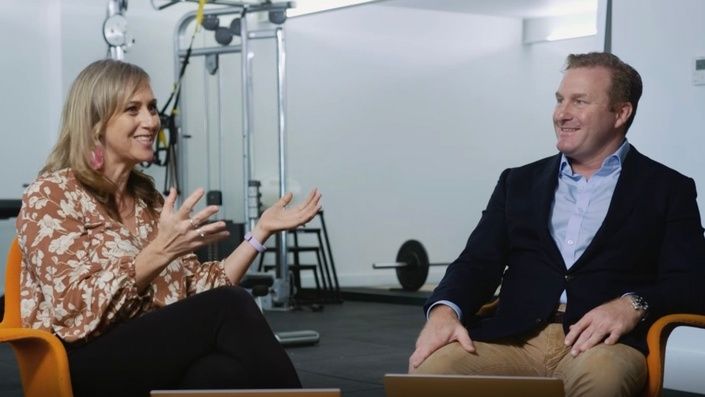Introduction
The Adolescent Knee Masterclass, taught by Dr Ivan Astori and Dr Loretta O’Sullivan-Pippia, provides a thorough outline of adolescent knee pathologies, from ACL tears to Osgood Schlatter’s Disease (OSD). This Executive Summary provides clinically relevant, actionable information that may be useful to health professionals.
Part 1: Adolescent Athletes are not Mini Adult Athletes
When treating adolescents, we are not merely dealing with the individual and their injury. Their physical maturity, social context including involvement of their parents, and their psychological maturity are all important factors to consider. As a result, our approach must be unique and tailored, all the way from our subjective questioning to discharge.
- Have a low threshold to send adolescents for a scan if suspecting a sinister cause; for example, hip pathologies such as a Slipped Upper Femoral Epiphysis (SUFE) can mask itself as thigh or knee pain.
- A subjective assessment should screen for red flags including fever and chills, include a thorough family, antenatal and developmental history, yellow flags including stress and academic pressure, physical growth, sleep and diet patterns and a detailed sport and loading history.
- Objective assessment for adolescent knee pain should include a gait assessment, hip ROM testing, palpation, special tests including Mcmurray’s test and Lachman’s tests, The Beighton Scoring System to assess hypermobility, and a bent knee fallout test.
Part 2: Adolescent Knee Pain
With their bodies still physically maturing, physiotherapists need to be aware of and appropriately respond to suspected fractures and osteochondral pathologies of the knee given the potential to disrupt the active growth plates in the region. Imaging is usually required to diagnose these pathologies, with an orthopaedic surgeon’s review to follow to ensure the best outcome for the individual, as surgery or bracing may be indicated.
- Physiotherapists should be wary of adolescent-specific knee conditions such as proximal tibial apophysis fractures, osteochondritis dessicans, patella sleeve fractures, and tibial spine fractures, especially when trauma is involved.
- Use of the Ottawa Knee Rules can help to rule out fractures of the knee by checking if they can a) weight bear for 4 steps, b) bend their knee beyond 90 degrees, and c) are not tender on their patella or head of fibula on palpation.
- Physios should refer to and work alongside orthopaedic surgeons for these presentations to facilitate surgery, if required, and a gradual return to activity.
Masterclass Preview
Knee pain in adolescent athletes is one of the most common complaints during sport.
Enjoy this free preview on the clinical knee exam from our Adolescent Knee Masterclass.

Part 3: Osgood Schlatter’s Disease and Patellofemoral Joint Pain
OSD and PFJP are two commonly occurring knee pathologies in adolescents, each with their own intricacies to examination and management. Whilst both conditions are usually simple to diagnose, they can be difficult to overcome with a relatively high proportion of individuals experiencing symptoms well beyond their initial diagnosis. Given this, it’s important to not dismiss either condition as merely ‘growing pains’ and instead ensure that we employ various physiotherapy interventions to ensure a good outcome.
- Tracking and managing adolescents’ load (physical, mental, and social) is important in the treatment of both OSD and PFJP.
- Isometric quad and glute exercises, such as wall sits and Spanish squats, can be great introductory exercises for both PFJP and OSD, especially alongside taping of the knee specific to each condition.
- Given errors in load management often bring rise to or aggravate these conditions, physios should use these injuries as opportunities to teach adolescents about load management, progressions, and regressions for exercise.
Part 4: Child & Adolescent ACL Injuries
The awareness of ACL injuries in adolescents is high, however, our understanding of how to appropriately manage them is poor. Whilst surgery is commonly perceived as the gold standard to treat these injuries, it is by no means a perfect solution. Beyond this, we cannot dismiss the psychological impact of ACL injuries, the importance of prehab prior to surgery and the possibility and implications of early osteoarthritis.
- Injury prevention programs such as FIFA 11+ are effective to reduce ACL injuries, however their implementation is poor; physios have an important role to play to improve this.
- ACL reconstructive surgery in adolescents is not without its faults, with relatively high re-rupture rates and contralateral ACL rupture rates following the procedure.
- Early ACL rehab (or prehab) should consider gait re-training, quad and knee control in movements such as squats, challenge their balance, as well as focussing on strengthening their hamstrings and glutes.


